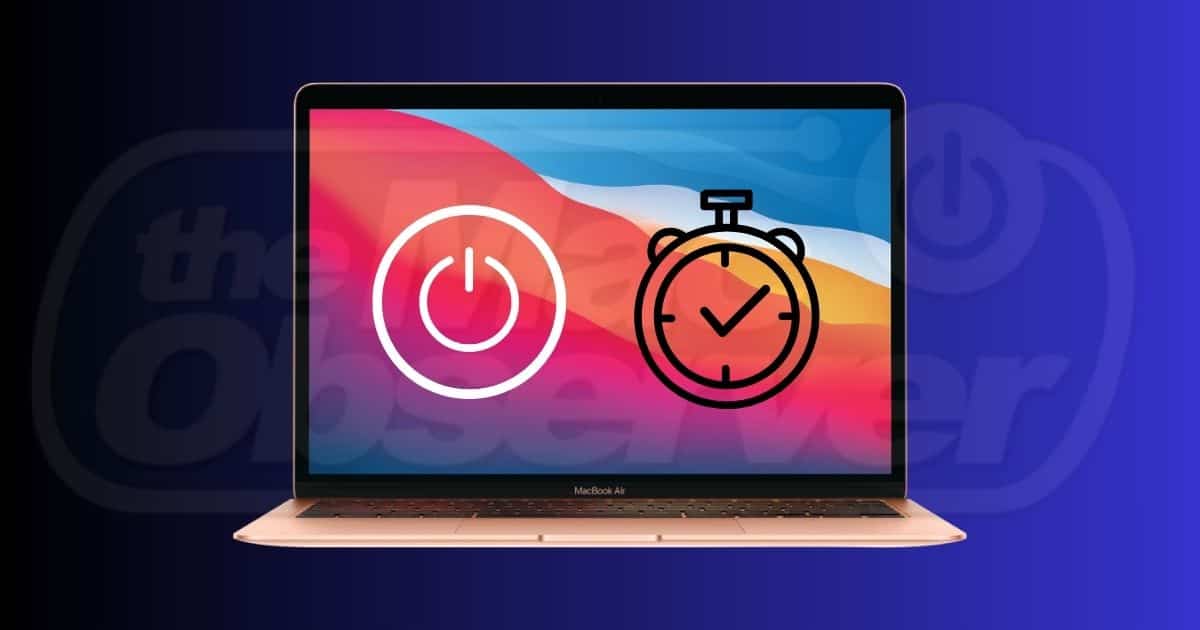Wondering how to schedule your Mac to shut down and start up? This feature is pretty efficient for a few reasons. You can set it up to turn on when you’re about to start working, so you won’t have to do so yourself. You can also program your device to turn off or restart routinely, clearing it of cached files and helping it run smoother.
Here are three easy methods you can try—let’s dive in.
How to Schedule Your Mac to Shutdown and Start Up
1. Set Up Commands on Terminal
If you’re using macOS Ventura or Sonoma on your Mac, you can run the pmset command on Terminal. This controls power management settings on your device. Other than letting you set a fixed time and day to power up your Mac, you can also program your device to go into sleep mode, restart, and so on.
Time needed: 1 minute
Setting a customized power schedule on your Mac is simple and easy. Follow these steps:
- Open Launchpad > Other, then select Terminal.
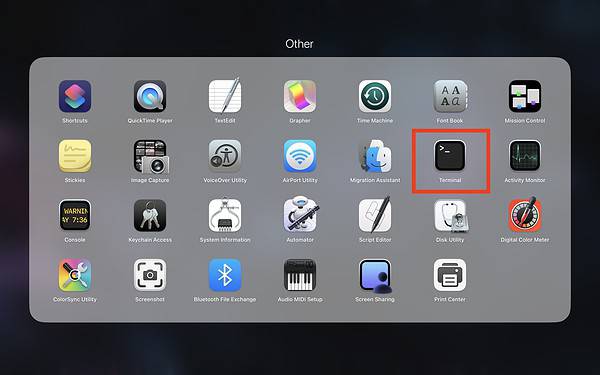
- Set up a new schedule by keying in pmset -g sched, then press Return.
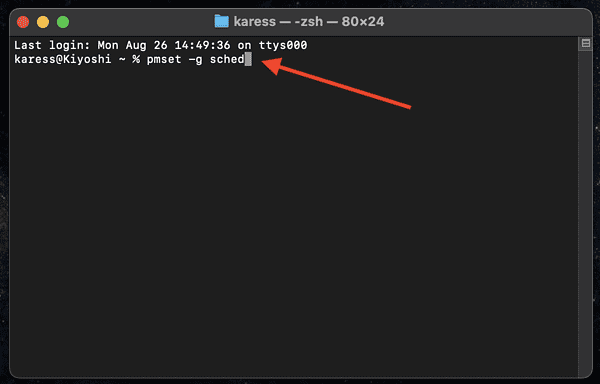
- Schedule your Mac to switch on at 7 AM every Monday by typing
sudo pmset repeat poweron M 7:00:00.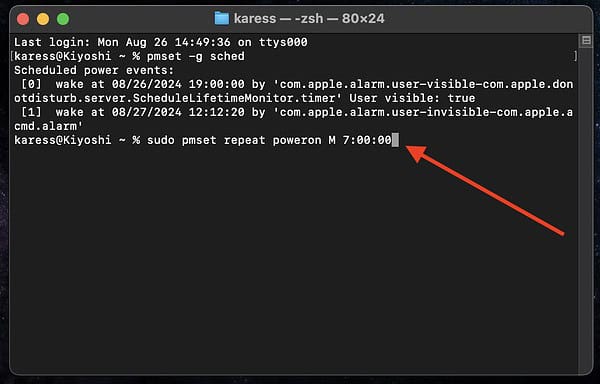
- Press Return again.
- Type your device password, then press Return.
You can set your Mac to power on at a different time as long as it follows the hh:mm:ss format. Meanwhile, if you’d like to add schedules for other days, simply replace M with the letters below:
- T: Tuesday
- W: Wednesday
- R: Thursday
- F: Friday
- S: Saturday
- U: Sunday
To shut down your computer every Monday at 5 PM, type in sudo pmset repeat shutdown M 17:00:00. If you’d like to cancel the schedules you’ve set up, key in sudo pmset repeat cancel.
 NOTE
NOTE
pmset commands here. 2. Install Third-Party Software
Users on macOS Ventura or Sonoma can also download third-party apps for a more seamless way of scheduling power on or shut down. OnyX is a free app that allows you to maintain and optimize your Mac through a simpler and more user-friendly interface. One of its features includes a power on/power off feature.
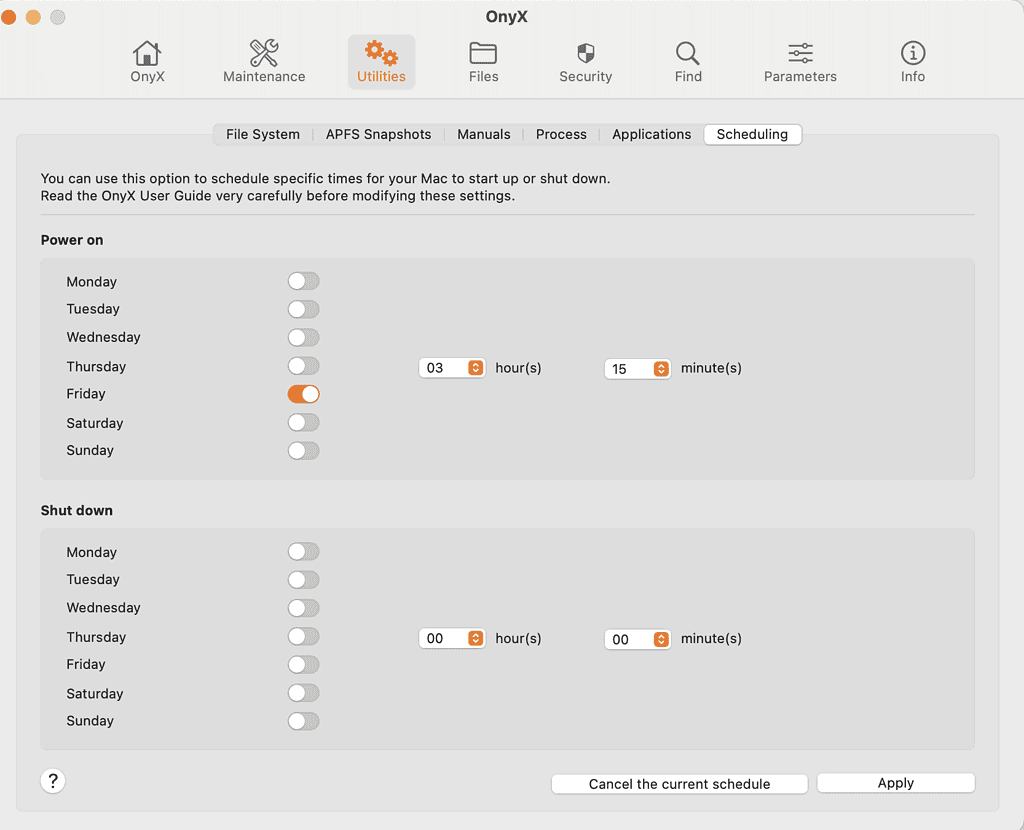
Image credit: Apple Communities
All you need to do is navigate to the app’s Utilities tab, toggle the set days, and set a specific time for start-up and shutdown.
3. Use System Preferences
This specific step applies to those who use macOS Monterey or earlier. Previous macOS versions could set up an automatic timer for power on and off under System Preferences. Here’s how:
- Click on the Battery icon under System Preferences.
- Select Schedule.
- From here, you can either Schedule a startup or wake time for your Mac or Schedule a sleep, restart, or shutdown time for your Mac. Tick the appropriate box.
- Select your chosen day or group of days, and enter your preferred time.
- Click Apply.
Contact Apple Support for further assistance on how to schedule your Mac to shut down or start up. Meanwhile, here are some ways to fix low microphone volume on macOS Sonoma.
